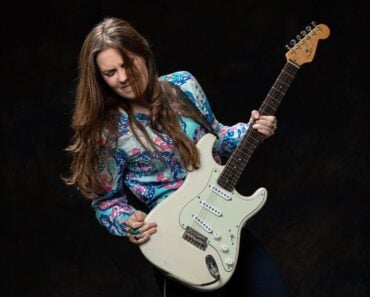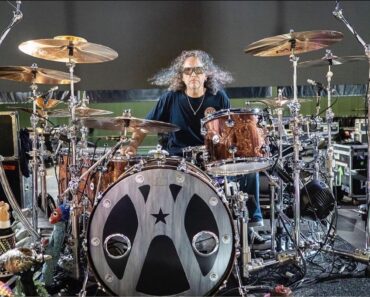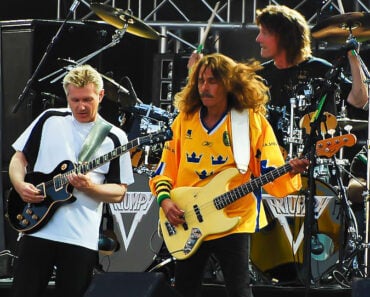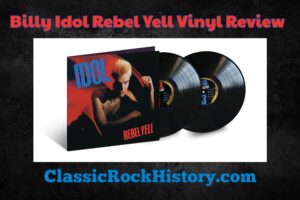
Photo by Ryan Sidebottom used with permission.
An Interview with David Pajo of Gang of Four, Tortoise & Slint
By Andrew Daly
When you think of a “guitar hero,” oftentimes – justifiably so – players such as Slash, Jimmy Page, and Keith Richards come to mind. It’s no surprise, given that these giants of the earth have strode forth as luminaries, dominating the charts and influencing the masses as they pleased.
Still, there’s nothing side to this guitar-centric coin, one which reflects a different sort of legend. If you’re a fan of transcendent ’90s alt-rock, for instance, you might have heard of Slint, whose record Spiderland (1991) went on to hit the proverbial reset button on angular, dissonant post-rock.
Moreover, you might have also heard of Tortoise, yet another similar alt-rock act, whose record, TNT (1998), represents the creme of the crop when it comes to laid-back instrumental exotica, the likes of which many bands wouldn’t touch, let alone execute to sublime results.
Of course, if you’re a fan of those records, of the genre, in general, you probably have borne witness to the talents of one David Pajo. Indeed, Pajo is a six-stringer too key for megastardom, yet in that same breath, he’s aided in creating some of the most important music of the last 30 years.
With such a pedigree, it’s no surprise that Pajo now finds himself a member of Gang of Four, treading across the hallowed once occupied by Andil Gil. To that end, Pajo is still doing what needs doing: preaching the good word of indie rock in all its forms via systematic—swells of incandescent guitar perfection.
David Pajo recently beamed in with ClassicRockHistory.com to discuss his musical origins, the life cycle, and importance of Slint, joining Tortoise, and his current work with Gang of Four.
What led you to first pick up the guitar?
I just always thought they looked and sounded exciting. They made me want to bounce off the walls. I started off playing drums, but it turned out that the guitar was easier.
Who are your main influences?
That’s always a tricky question because it changes by the hour. Right now, my main influences are Norwegian novelist Knut Hamsun, horror soundtracks, and some electronic music.
Can you recount your first gig? What did it teach you that you still apply today?
I don’t recall the first actual gig I ever played. I joined a band when I first started playing guitar at 14. We started off covering Led Zeppelin and Rush, and lord knows what else. Then we got signed to a talent agency and started playing top-40 at car shows, roller rinks, and bar mitzvahs. I never went to prom when I was in high school, but I was in the band that played at several high school proms!
Take me through the formation of Slint.
Britt [Walford] and I were in a band called Maurice; they were a Louisville band that had various members of Squirrelbait since they started in the early ’80s. We did a tour opening for Samhain in 1986, and then Britt and I started writing songs that were very different from the Maurice sound. And then, the band split in two; the singer and bassist formed Kinghorse and recorded an album produced by Glenn Danzig. Britt and I started Slint. Literally, the last Maurice song became the very first Slint song: “Darlene” on Tweez, originally called “New Dave” in Maurice.
Describe the sound of the band to new fans.
We started playing with clean guitar sounds, using spoken word, when shouting and loud guitars and drums were expected of the subculture we were in. Not many people liked us at the time. We were into bands that are well-known now but were unknown and unloved at the time. We admired Big Black, Dinosaur Jr, Meat Puppets, Minutemen, Mekons, Sonic Youth, etc. But also Rolling Stones, AC/DC, Madonna, Suicide, Nick Drake, Bruce Springsteen, delta blues, early country, and Texas swing.
Spiderland gets a lot of attention, but how important was Tweez to the development of the band’s sound?
For most of us, besides Brian McMahan, it was our first time in a real studio. Tweez sounds very different in production than Spiderland, but the songwriting isn’t really that dissimilar. In 2005, we played both Tweez and Spiderland songs in our live set… it all sounded like Slint.
Walk me through the writing and recording of Spiderland.
It wasn’t conscious, but this is how it happened: we rehearsed five of the six Spiderland songs nearly every day for a year (or longer). Then we recorded all the basic tracks and vocals over a weekend, from Friday evening to Monday morning. We went back the following weekend to mix the songs that became Spiderland.
What are your favorite tracks and why? Did you have any idea that you were breaking new ground?
I think that “For Dinner” is still my favorite song on the album. I knew Slint was special from the day we formed in 1986! But I didn’t think anyone would ever like us in the future, except for hardcore music nerd technophobes.
How did you go from Slint to Tortoise?
Well, Slint broke up at the end of 1990, so by the time Spiderland was released, we were already history. I didn’t realize it at the time, but Slint imploding was quite a shock to me. I wasn’t sure if I wanted to be a musician after that. So, I went to an art college in England for a year and didn’t even bring a guitar. Came home and went straight into Palace Brothers. I was mostly into old bands, but in the early ’90s, my two favorite new bands (at the time) were Tortoise and Stereolab. Lucky me—I ended up joining both bands!
Can you recount the inception of Tortoise’s TNT?
That was our first all-digital album. We recorded it on an early version of Pro Tools at John McEntire’s home studio. We all shared a loft space; it was very much like a commune. But all our previous stuff had been recorded to tape. My involvement was pretty laid back; I wasn’t as present as much as I was on Millions Now Living.
What gear did you use with Tortoise, and how did it differ from Slint?
I played guitar with Slint and primarily bass with Tortoise (outside of a few songs on guitar or bass VI). My approach with Tortoise was kind of similar to Slint in the sense of chiaroscuro—I wanted my guitar (cold/brittle) in Slint to contrast with Brian’s guitar (warm/deep). With Tortoise having two bassists, I wanted to have a thinner, more mid-range-y sound to contrast Doug’s huge low end.
How did you hook up with Gang of Four? What is your approach to interpreting the band’s iconic music?
I did an interview with the Crash and Ride podcast. I don’t recall if I was singing praises to Gang of Four or not, but Patrick Ferguson, the host, knows Hugo Burnham, Gang of Four’s amazing drummer… he recommended me when he heard they were looking for a guitar player.
My approach is this: there’s only one Andy Gill, and no one else can replace him. I reinterpret what I love about his playing, his sound, and his songwriting in my own way—I cherry-pick my favorite Andy Gill moments and try to recreate the excitement that I feel from Gang of Four’s songs/vibe. It’s not a tribute to Andy; really, I feel like I’m turning a friend onto the band: “See, this is why they are so amazing!”
Was Andy Gill a big influence on you?
I knew Andy was an influence on me, but a lot of people were when I was a teenager. I didn’t realize just what a massive impact his playing made on me until I started learning the Gang of Four songs… and they all felt natural. His style… feels really normal to me; it’s part of my dialect/vocabulary. He was the king.
What guitars and gear are you using and why? Have you altered your rig to suit Gang of Four?
I change my setup according to what’s best for the band/songs. I spent the pandemic learning Gang of Four songs and tweaking my setup. My goal was to recreate the spirit of each song according to the time frame they were written. Meaning there was a Songs From The Free guitar sound that was very specific but differed from the Solid Gold guitar tones—which differed from To Hell With Poverty. And so on.
So, I use a switcher to get the most out of my pedals. In the future, I’ll continue to shrink my pedalboard. But the main sound on everything is still the most direct route from pickups to the amp.
Of all the records you’ve worked on, which is the most meaningful, and why?
In the early 2000s, I quickly recorded an album with a band called Children’s Hour. I was playing bass and drums. We had just finished a big tour supporting Zwan (I was double-gigging) and were at the top of our game. We tracked everything in one day at a farm in Shelbyville, Kentucky. I didn’t finish tracking the bass, and I had to go back on tour… so the idea was that I’d finish it when I had a break.
Well, I lost the files, and for two decades, all we had were the rough mixes. When lo and behold, the original tracks were found on an old hard drive, thanks to Paul Oldham, who engineered the tracking session. We are finally going to release this amazing album. For me, it’s the only other record I’ve made in a similar way to Spiderland… tracked quickly when the band knew the songs inside and out, with zero expectation other than to document a moment.
What’s next? Is Gang of Four working on new music?
We’ve been writing new tunes and reworking old ones. I can’t wait to really get into this part of the process!
David Pajo of Gang of Four, Tortoise & Slint: The ClassicRockHistory.com Interview article published on Classic RockHistory.com© 2022
Classicrockhistory.com claims ownership of all its original content and Intellectual property under United States Copyright laws and those of all other foreign countries. No one person, business, or organization is allowed to re-publish any of our original content anywhere on the web or in print without our permission. All photos used are either public domain creative commons photos or licensed officially from Shutterstock under license with ClassicRockHistory.com.
All photo credits have been placed at the end of the article. Album Cover Photos are affiliate links and the property of Amazon and are stored on the Amazon server. Any theft of our content will be met with swift legal action against the infringing websites.



































